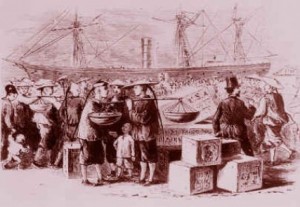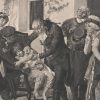Using the Chinese Exclusion Act Records in Genealogy
If you are researching your Chinese heritage in the U.S. and your ancestors had immigrated to the country in the late 19th and early 20th centuries, a great place to look is the Chinese Exclusion Act case files. In 1882, the United States passed the Chinese Exclusion Acts to limit the number of Chinese immigrants coming into the country. Ten years later, the Act was modified to require all Chinese residents to obtain a certificate of residency and prove their identity in order to be in the United States. The Act prevented those already in the country from becoming naturalized citizens. It also required Chinese residents already in the U.S. to obtain forms of re-entry if they left the country for any reason. Anyone without the proper documentation would be deported or imprisoned. From 1882 – 1943, thousands of records were collected containing very valuable genealogical information. Let’s take a quick look at what you may find:
What can I find?
 Generally, you will be able to find the person’s name, any aliases or Westernized versions of their name, age, physical attributes such as height, occupation and place of residence. An inspector may add additional remarks like how much English they knew and how long they lived in the U.S. Also included would be the port, date of arrival and the name of the vessel.
Generally, you will be able to find the person’s name, any aliases or Westernized versions of their name, age, physical attributes such as height, occupation and place of residence. An inspector may add additional remarks like how much English they knew and how long they lived in the U.S. Also included would be the port, date of arrival and the name of the vessel.
Later files also include a formal interrogation, with both the questions and answers about their family members, place of birth, previous residence in China and the reason for leaving or returning to the United States. Almost all records will also have at least one picture. If your relatives left the country and re-entered, sometimes photographs were taken before departure and upon re-entry.
There will mostly likely be references to other files including birth or death certificates, marriage certificates, affidavits from witnesses and descriptions of a village in China.
“Paper Sons”
Be mindful of “paper sons” while researching through these files. Since the Chinese Exclusion Act could not be imposed on those who were already citizens of the U.S., many Chinese citizens would claim other Chinese immigrants as their son or daughter in order to grant them entry into the country. Often these “slots” were sold to those trying to gain entry to the country. They would memorize documents about the family in order to pass the interrogation process and thus, enter the country illegally.
How can I find these records?
You can search the National Archives and their facilities for these files and request copies of the documents to be sent to you. To find these files, you will need to know the name of the immigrant that was used on these papers. Keep in mind that this may differ from their common name, and can be an alias or their traditional Chinese name. Also, make sure to check both their given name and surname in the surname index, since it was common for officials to mix these.
Once you have the copies of these documents, don’t forget to share them on Geni!







 Genealogy Discussions
Genealogy Discussions Genealogy Projects
Genealogy Projects Popular Genealogy Profiles
Popular Genealogy Profiles Surnames
Surnames The Geni Blog
The Geni Blog The World Family Tree
The World Family Tree